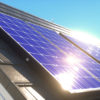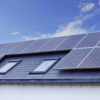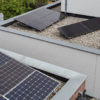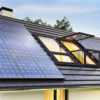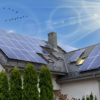If you’ve been keeping up with the news, then you may have heard of a new legislation that will impose a tariff on energy exported from rooftop solar panels. The measure hopes to solve energy traffic jams that have been plaguing the Australian grid recently.
Even though the tax may seem like a good thing for the economy in general, as a solar power owner, you are bound to ask how it might affect your recovery period. After all, an extra tariff on exportable energy means you earn less from the electricity you sell. And, the overall effect can pile up over the years, dragging the time it will take to recoup your investment.
Let’s take a look at the AEMC’s proposed rule change, and what you might need to do should it take effect.
Why the New Tariff?
Today, there are more than 2.6 million roofs with solar panels across Australia and projections are that the number could go up to 6 million by 2030. Obviously, this is a good thing. More homes and small businesses with solar panels means a more robust energy grid, cheaper energy prices, more power for the economy at a lower environmental cost.
But, let’s not forget that all of this has to work through a grid that was designed decades ago and didn’t really take such an uptick in energy production into account. While it’s fairly easy to install solar panels on roofs and hook them up with the grid, upgrading the latter is an expensive, tedious and very time consuming process.
As the number of solar power systems have exploded in recent years, we’re beginning to see “electricity traffic jams” happen that are throttling the grid. Consequently, some residents are unable to offload their electricity because the network is already full.
For example, residents in Victoria recently found that they were unable to sell their electricity while in South Australia, operators were forced to shut down solar panels remotely due to record low demand.
The proposed tax hopes to curb this problem by taxing electricity from rooftop solar systems. But, while this may ease the load on the grid, what might it mean for homeowners who have invested in solar power?
Unfortunately, there really is no easy way out here. Even if there was no new tax in the works, the simple fact is that supply is outshooting demand. This means you will get less for your electricity unless the grid itself was upgraded or new demand was added through greater industrial, commercial or residential developments.
The good news is that the latter is actively happening even as we speak. As more renewable energy power stations come into circulation, coal and other dirty energy sources are going to exit. Also, the Australian government is incentivizing electric vehicles which will add demand to the grid.
But, what can you do in the meantime should the proposed tax come into effect? Here are a couple of ideas to try out.
Match Your Heaviest Electricity Usage to Peak Time
By far the biggest reason why residents see long payback periods is because they don’t actively track their usage and optimize their energy spend. Yes, you can sell electricity at peak times to earn more. But, you can also save more by buying less from the grid. The best way to do so is to use all your heavy appliances during peak hours.
Consider using your dishwasher, washing machine, dryers and pool filters during the middle of the day to use as much power from your solar panels. This will not only reduce the load on the grid, but will help you utilize your energy more efficiently. If you have electric vehicles, then you can charge them up during mid-day as well.
The peak demand itself varies, but generally speaking, it lasts from 2 PM to 8 PM during summer months and between 5 PM and 9 PM during winter.
Invest in Battery Backup
Part of the reason why we’re having excess supply is also because the electricity being generated cannot be stored efficiently. Consequently, it has to be dispatched immediately. Investing in a battery backup system can solve this problem. Electricity that cannot be sold to the grid can be saved to your backup instead and sold when demand opens up. Or, it can be spread throughout the day.
However, a battery system is a significant investment. As of Feb 2021, a 3kWh battery plus charger and inverter system will cost you an additional $5,640. That’s more than the price of solar panels of equal wattage.
Battery prices are falling constantly. So, there are some circumstances under which a solar panel + battery backup can make financial sense. However, this really boils down to your electricity usage patterns, future requirements and financial goals. You will have to work with your installer to decide the size and specs of the system.
Don’t Go In Blind
The energy economy is constantly evolving and it’s hard to predict where it will be a few years from now, just like no one knew a tax like the one mentioned here would come up. But, with proper planning, you can design and implement a solar power system that will not only be weather, but future proof as well.
Helping residents find the best solar PV system is what we at bidmysolar do best. We’ve helped our customers save $3,100 on average and will love to do the same for you. Check out how we work or contact us if you have any questions.

